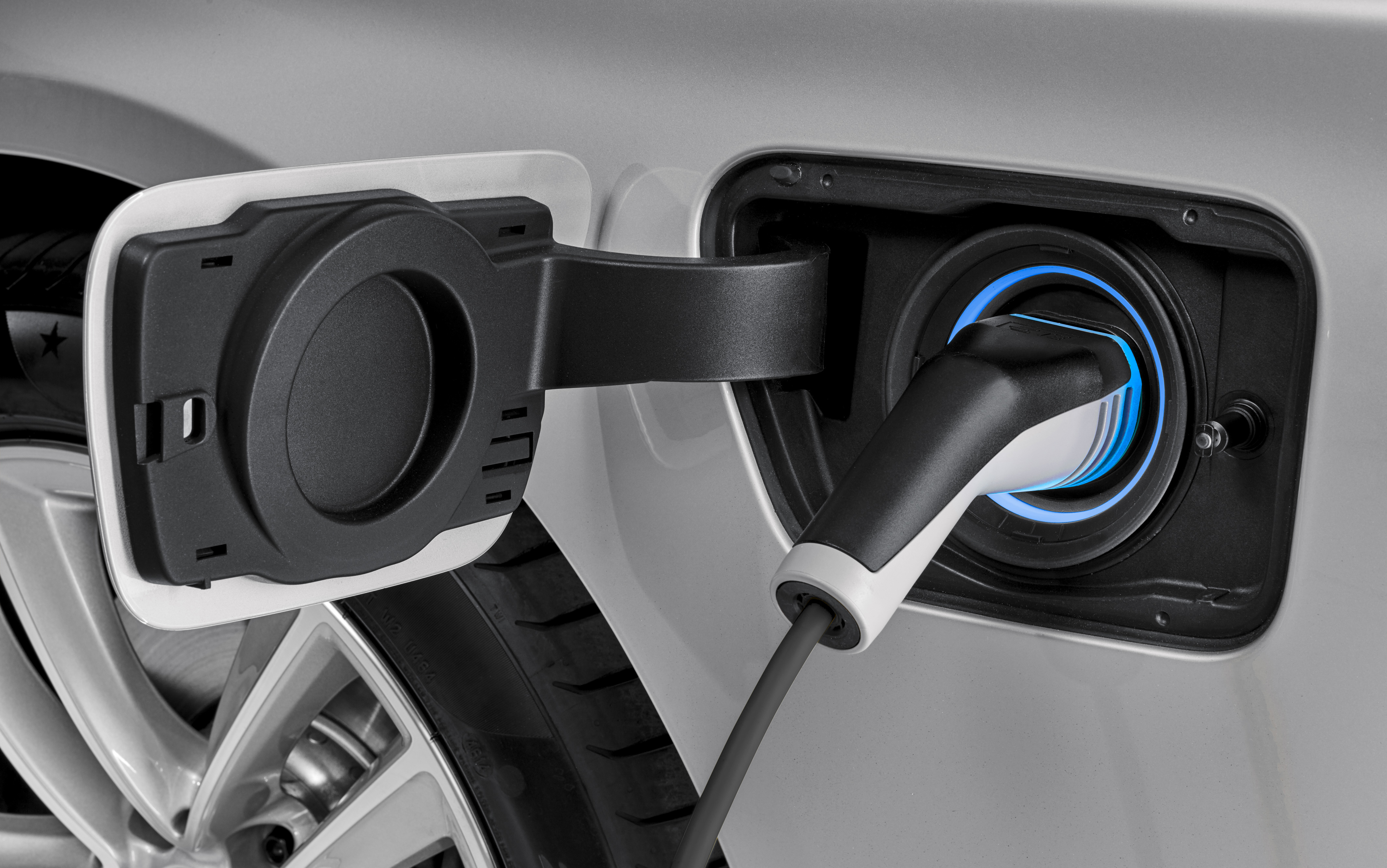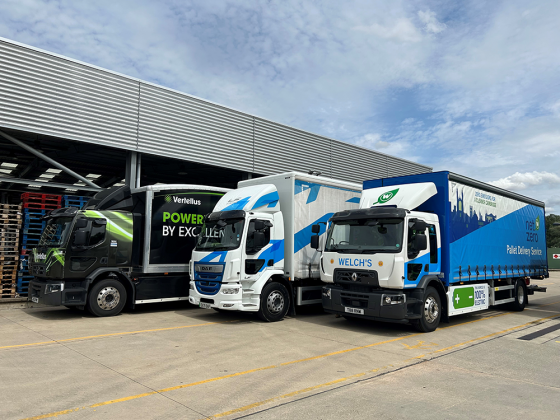Panel discussion: What to consider when buying EVs?

The Automated and Electric Vehicles Bill includes plans to remove some of the barriers to electric vehicle adoption. But what should fleet operators consider before buying a plug-in vehicle? We ask our expert panelists for their EV advice and other ways to cut harmful emissions.
The Automated and Electric Vehicles Bill, included in the Queen’s Speech, sets out ways to encourage electric vehicle adoption and make it easier for EV drivers. This will be done by making sure the right infrastructure is in place, and crucially, making charge points from all different networks, easily accessible.
The plans also aims to ensure that the data about the location and availability of charging stations is openly available, as well as proposed new laws to make motorway services and large fuel retailers provide EV charge points. If these proposals get passed, it will remove some of the major barriers to electric vehicle adoption.
With the French government recently saying it will ban the sale of petrol and diesel vehicles by 2040, Volvo announcing plans to only produce cars with electric capability, and the UK government due to publish its clean air plans imminently, there is a global push for greater uptake of zero or ultra low emission vehicles.
Organisations that operate a fleet of vehicles may therefore be feeling the pressure to switch to battery-powered vehicles. So how can leasing and contract hire firms help those considering EV options?
“It’s important that the leasing industry helps companies to understand what’s involved in taking on electric vehicles and what it means for their business and their specific drivers,” says Matt Dale from ALD Automotive.
“The new Bill aims to improve EV infrastructure in the UK, and leasing firms should also do more to include the wider implications of running an EV in the scope of their advice,” continues Matt. “This will involve examining relevant charging solutions both at home and work, such as help with implementing a home charger, while also giving companies the tools to understand various government grants that can help towards cost.”
But it is also vital that fleets consider the current limitations with electric vehicles, and look carefully at their day-to-day requirements before investing in EVs – something that leasing firms can help with.
Rob Mills from Daimler Fleet Management says: “It is important to remember the overriding operational requirements of the fleet and be able to build an EV implementation plan that can be introduced at the earliest possible opportunity, without compromising the effectiveness of the business.”
“Certainly the leasing & contract hire company should be fully aware of the sectors’ developments and what the manufacturers are doing so that they can advise on potential EV providers, as well as outline the operational costs and taxation savings available to fleet operators when opting for EVs,” Rob adds.
Chris Salmon from SG Fleet echoes this thought, also highlighting the importance of “unbiased consultancy on model options from various vehicle suppliers”.
Advice on practical support around the vehicles themselves should also be given by leasing firms, says Matt Dale from ALD Automotive. “This includes advice on how drivers can get the best performance out of their car depending on the model type, as well as comparisons of each type – plug-in hybrid, battery electric vehicles or hybrids,” he says.
Raising the current limitations that exist with electric trucks, David Cooper from Arnold Clark Vehicle Management says: “To carry a 12 tonne load, an HGV vehicle would need a 30 tonne battery. That’s just not viable. Elon Musk has suggested that Tesla are working on an electric truck, so it will be interesting to see what they come up with.”
There are other issues surrounding EVs which should be understood, adds David, such as the demand mass charging will have on the grid, and the importance of using renewable energy to charge EVs if they are to be truly zero‑emission.
Ways to be green
But it is not just adopting electric vehicles that can lower the emissions of a fleet, and leasing firms can offer a range of advice on ways to operate greener.
Chris Salmon from SG Fleet says: “The whole purpose of best practice fleet management is to increase the efficiency of fleets. That can mean less vehicles used, and better use of the remaining vehicles in terms of driving practices – reducing wear and fuel consumption. Measurement of fleet emissions, identifying methods to reduce trips and fuel burn, and the development of integrated mobility options that consider alternative transport are all key things to consider.”
Matt Dale from ALD Automotive agrees, saying: “Leasing firms can help companies reduce emissions by providing practical advice on implementing alternative methods of travel such as public transport, the use of electric pool cars and car sharing schemes. Guidance can also be given around flexible and home working or encouraging employees to travel at off-peak times that will reduce time spent in traffic and therefore fuel consumption.”
Driver training is also important, says Matt: “Leasing firms can recommend solutions that will encourage drivers to drive smarter, through the provision of tips and advice around idling, revving and speed control right through to practical training.”
Looking closely at the types of journeys done will also help with improving the efficiency of a fleet, says Rob Mills from Daimler Fleet Management. He says: “Vehicle utilisation is an area to be reviewed to ensure that there are no unnecessary or duplicate journeys taking place, this can be supported with the use of telematics.” He adds that leasing companies should be discussing the best replacement cycle in order to ensure fleets have the most recent and cleanest vehicles on fleet.
Matt Dale from ALD Automotive also believes that “leasing companies should use their expertise to develop products that empower fleet managers to monitor and control their carbon footprint, such as telemetry systems that can record driving behaviour and vehicle performance.”
ICE engines
With such a big push from the government to encourage zero and ultra-low emission vehicles, are ICE-powered conventional low-emission petrol or diesels getting unfairly sidelined?
“Sales of new diesel and petrol cars continue to far outstrip their zero and ultra-low emission equivalents, according to SMMT New Car Registrations from June 2017,” comments Matt Dale from ALD. “This shows there’s still a strong appetite for the traditional combustion engine. However as the technology advances and legislation adapts, as we’ve seen with the introduction of the Automated and Electric Vehicles Bill, it’s likely we’ll continue to see an increase in low-emission vehicles on our roads.
“While there are arguments for and against each type of vehicle, what’s clear is that consumers and businesses now have far more choice than ever which is hugely positive.”
Chris Salmon from SG Fleet says: “Power source technology will continue to evolve, even with traditional fuel types, which will naturally result in both petrol and diesel becoming more efficient. Fleet operators will make their own decisions, influenced by financial factors, environmental consciousness or energy market favouritism. It is not our decision to determine whether vehicles are fairly or unfairly supported by government initiatives. Our role is to present an unbiased view of the factors to allow customers to make an informed choice/strategy and policy.”
David Cooper from Arnold Clark Vehicle Management meanwhile sees ICE vehicles being around for a long time to come. “The mild hybridisation that Volvo suggested in its recent plans is likely to become very common as it offers a phased approach to electrification,” David says.“Electric vehicles are not suitable for drivers in rural areas, or even drivers in major cities living in apartments.”
Rob Mills from Daimler Fleet Management says: “Conventional low-emission petrol and diesels still have a vital role to play in improving the environmental impact of running a fleet. It is becoming more commonplace that customers are starting to consider the re-introduction of petrol vehicles to their fleet policy for certain groups of fleet drivers. Proactive support from fleet providers can assist the customer by providing accurate whole life cost running data for both the company and driver alike and greatly assist the decision making process.”
Other alternatives
While electric vehicles tend to grab the headlines, there are other alternative fuels that can help decarbonise transport, such as hydrogen and biofuels. Indeed the Automated and Electric Vehicles Bill included the requirement for a better hydrogen refuelling infrastructure. Work is already underway, with Shell unveiling its first public hydrogen refuelling station in the UK earlier this year, and plans to open two more.
David Cooper from Arnold Clark views hydrogen as a promising alternative fuel, but believes that in the short-term, it will not play a major part in the fuel mix because the technology is still too young and there’s not enough infrastructure in place to make large-scale adoption a reality.
Matt Dale from ALD Automotive agrees, saying that while the technology to facilitate the use of alternative fuels is available, the infrastructure is far behind. “This means drivers may struggle with fewer refuelling locations and a more restricted choice in vehicles,” Matt says. He adds that if a company does want to use alternative fuels, careful examination must be done first to see how it would work in practice. This could involve “seeking out case studies where this has been done successfully before or even carrying out trials,” Matt suggests.
Looking at biofuels, David Cooper from Arnold Clark Vehicle Management says: “For ICE vehicles, there is a limit to what can be achieved in making these fuels cleaner. No matter how you look at it, you are burning a fossil fuel, which has to produce emissions of some kind. But by mixing normal fuel with biofuels, emissions improvements can be achieved.”
David continues: “Bio fuels such as bio‑diesel and ethanol are made from plant materials such as sugar cane, corn, maize, soybean or canola. The use of biofuels is common in regions that do not have hydrocarbon resources but do have suitable agricultural conditions, e.g. Brazil. They come from a wide variety of sources and so can be produced in many regions. The big benefit they offer is that they can be used in normal ICE vehicles. Ethanol produces around 15 per cent less emissions than petrol, but some studies show that biodiesel can be more harmful than normal diesel.”
SG Fleet is working closely with a number of companies developing alternative fuel sources, explains Chris Salmon. “We follow developments closely so that we can make such options available to customers once they are economically and operationally viable in a fleet context.
“Depending on the fleet application, fuel may represent 10-25 per cent of whole‑life costs. The effect of the fuel choice may be a small or large portion of that percentage and advantages may be affected by technology cost premiums and
productivity/downtime,” adds Chris.
EXPERT FINAL THOUGHTS
Matt Dale
As the technology advances and legislation adapts, as we’ve seen with the introduction of the Automated and Electric Vehicles Bill, it’s likely we’ll continue to see an increase in low‑emission vehicles on our roads. While there are arguments for and against each type of vehicle, what’s clear is that consumers and businesses now have far more choice than ever, which is hugely positive.
David Cooper
It’s important to recognise that ICE vehicles have an essential role to play in transport in the foreseeable future. That’s why a balanced, blended approach to vehicle transport is essential. The next generation of electric vehicles is only two or three years away. These vehicles will offer larger, more powerful batteries, with a range of up to 300 miles. That means that range anxiety will become a thing of the past, which will encourage more businesses and drivers to look at electric vehicles.
Rob Mills
Electric vehicles are an excellent and necessary development, however they are not without their limitations in the current stage of their evolution. It is important to remember the overriding operational requirements of the fleet and be able to build a plan of EVs that can be introduced at the earliest possible opportunity without compromising the effectiveness of the business.
Chris Salmon
The whole purpose of best practice fleet management is to increase the efficiency of fleets. That can mean less vehicles used, and better use of the remaining vehicles in terms of driving practices, reducing wear and fuel consumption. Measurement of fleet emissions, identifying methods to reduce trips and fuel‑burn, and the development of integrated mobility options that consider alternative transport, are all key things to consider when greening your fleet.






